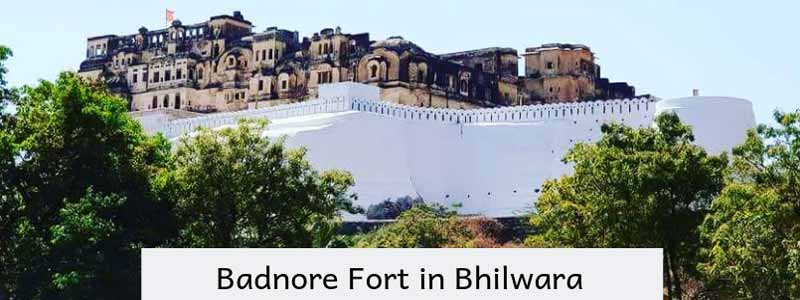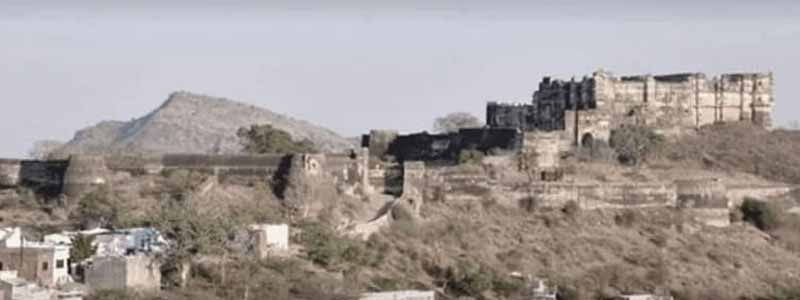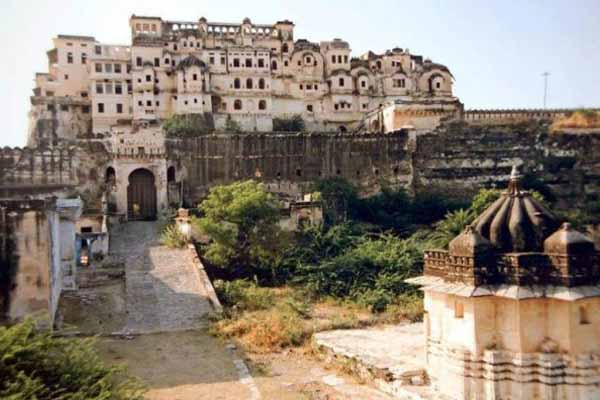Badnore Fort Bhilwara is a strikingly glorious post arranged in the Bhilwara region of Rajasthan. At a separation of approx. 180 km from Udaipur, the fortress makes extraordinary compared to other excursion escapes from Udaipur.Situated on Bhilwara-Asind Road, Badnore Fort is an immense seven storied Fort standing brilliantly on a little slope which enables it to give an across the board and staggering perspective from the fortress. The engineering of the Fort mirrors that of the awe inspiring conventional Rajputana style also. In spite of the fact that the fortification is in a condition of rot by and by, it speaks to the grandness and compositional magnificence of past Rajput leaders of Rajasthan.
The post has been deliberately developed as it has given barrier to the rulers in those days and has likewise filled in as a quiet observer to a ton of dispute in its previous days. The fortification is deliberately set close to a Lake which doesn’t simply gives a wonder striking perspective however has likewise blocked trespassers to assault effectively from one side. The Lake water was the real wellspring of water for the inhabitants of the post Rajasthan Monuments.

Badnore Fort Bhilwara: History
Badnore Fort is a strikingly magnificent place situated in the Bhilwara district of Rajasthan. Badnor Fort is an example of medieval Indian military style of architecture. It is a huge seven storied Fort standing magnificently atop a small hill which allows it to provide a widespread and stunning view from the fort. The architecture of the Fort reflects that of the splendid traditional Rajputana style as well. The buildings within Badnore Fort Bhilwara are all built in traditional Rajputana style of architecture, which is a local variation of the extensive Hindu style of architecture.
Although Badnore Fort Bhilwara is in a state of decay presently, it represents the glory and architectural splendor of the erstwhile Rajput rulers of Rajasthan. The strategic location of the fort increased its significance. Because, The fort has been strategically constructed as it has provided defense to the rulers back then and has also served as a mute witness to a lot of dissension in its earlier days.
The fort is strategically placed near a Lake which doesn’t just gives an awe-striking view but has also blocked invaders to attack easily from one side. The Lake water was the major source of water for the occupants of the fort. There are a number of small monuments and temples within the precincts of the Badnore Fort in the Rajasthan Budget tours and around it.

Architecture of the Badnore Fort
Located on Bhilwara-Asind Road, Badnore Fort Bhilwara is a huge seven storied Fort standing magnificently atop a small hill which allows it to provide a widespread and stunning view from the fort. The architecture of the Fort reflects that of the splendid traditional Rajputana style as well.
Although the fort is in a state of decay presently, it represents the majesty and architectural glory of erstwhile Rajput rulers of Rajasthan. The fort has been strategically constructed as it has provided defense to the rulers back then and has also served as a mute witness to a lot of dissension in its earlier days.
The fort is strategically placed near a Lake which doesn’t just gives an awe-striking view but has also blocked invaders to attack easily from one side. The Lake water was the major source of water for the occupants of the fort.
How to reach Badnore fort
By Air – The nearest airports from the Badnore Fort is at Udaipur, at a distance of 190 km.
By Rail – The nearest Railway station is at the small town Beawar located right adjacent to Badnore Fort Bhilwara.
By Road – Badnore Fort is easily accessible by the Road from the major destinations within Rajasthan. The Fort is located near the National Highway that connects the cities of Jaipur and Udaipur.
